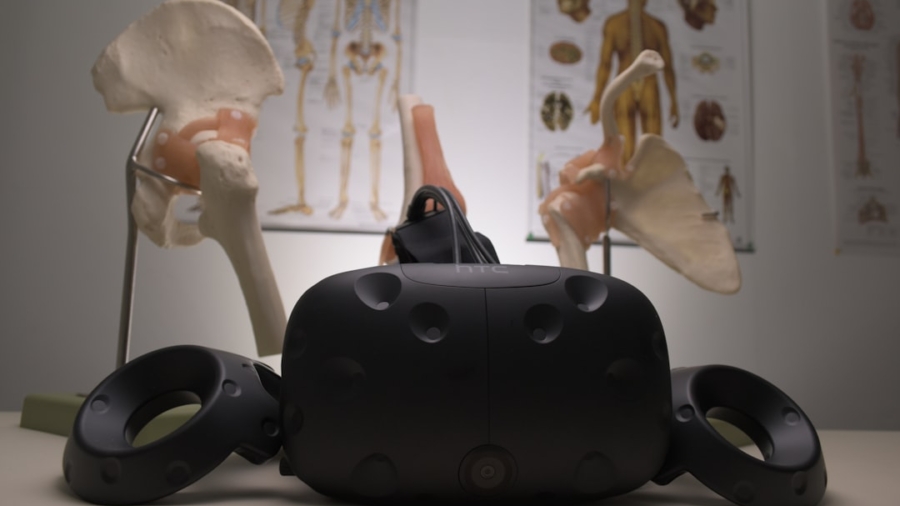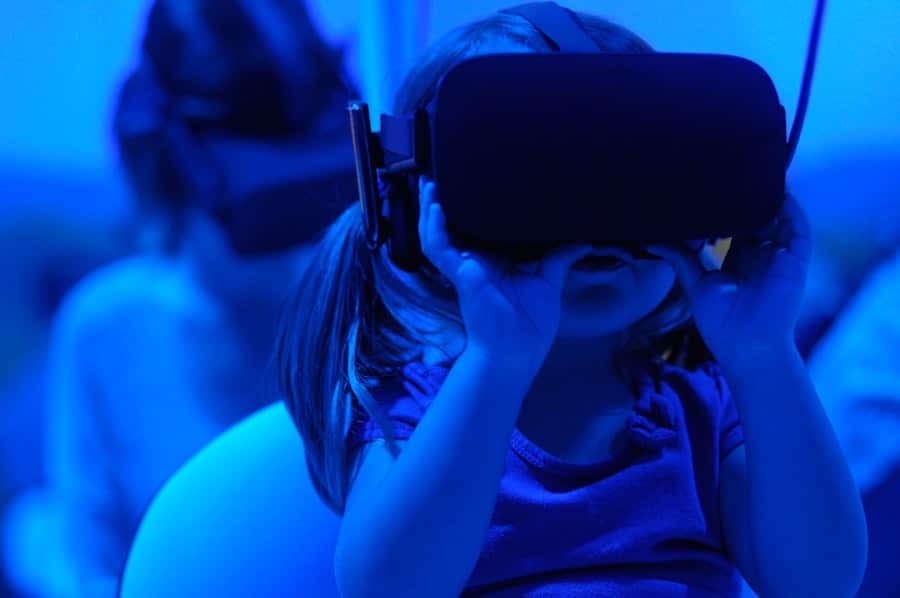Augmented Reality (AR) has emerged as a transformative technology in various sectors, and customer support is no exception. By overlaying digital information onto the physical world, AR enhances the way businesses interact with their customers, providing innovative solutions that improve service delivery and customer satisfaction. The integration of AR into customer support systems allows companies to bridge the gap between virtual assistance and real-world interactions, creating a more immersive and engaging experience for users.
This technology not only streamlines communication but also empowers customers with the tools they need to resolve issues independently or with guided assistance.
As consumers become more tech-savvy, they expect support that is not only responsive but also intuitive and engaging.
AR meets these expectations by offering visual aids, interactive tutorials, and real-time assistance that can significantly reduce the time it takes to resolve issues. Companies that adopt AR technologies are not only enhancing their customer service capabilities but are also positioning themselves as leaders in innovation within their respective industries.
Key Takeaways
- AR in customer support enhances the overall customer experience by providing real-time, interactive support.
- Remote assistance is improved with AR technology, allowing support agents to guide customers through troubleshooting steps and repairs.
- AR improves self-service options by providing customers with interactive guides and tutorials for resolving issues on their own.
- Personalized customer interactions are made possible with AR, as support agents can use the technology to tailor solutions to individual needs.
- Troubleshooting and technical support are streamlined with AR, as support teams can access real-time data and instructions overlaid on the physical environment.
Enhancing Remote Assistance with AR
Visual Guidance in Real-Time
By utilizing AR applications, support agents can visually guide customers through complex processes in real-time. For instance, a technician can use AR glasses to see what the customer sees and provide step-by-step instructions overlaid on the customer’s environment.
Interactive 3D Models
AR enhances remote assistance by allowing customers to interact with 3D models of products or systems. For example, a customer experiencing issues with a piece of machinery can point their device at the equipment, and the AR application can highlight specific components, providing detailed information about each part’s function and troubleshooting steps.
Empowering Customers and Reducing On-Site Visits
This level of interactivity not only empowers customers but also reduces the need for on-site visits, saving time and resources for both the company and the customer.
Improving Self-Service Options with AR
Self-service options have become increasingly popular as customers seek quick solutions without the need for direct interaction with support agents. AR technology significantly enhances these self-service capabilities by providing users with interactive tools that guide them through troubleshooting processes. For instance, a retail company might implement an AR app that allows customers to scan products in-store or at home to access detailed information about features, usage instructions, and common troubleshooting tips.
This immediate access to information can lead to quicker resolutions and increased customer satisfaction. Additionally, AR can facilitate immersive tutorials that allow customers to learn how to use products effectively. For example, a software company could create an AR experience where users can visualize software features in a simulated environment, enabling them to practice using the software before fully committing to it.
This hands-on approach not only enhances user understanding but also reduces the volume of support inquiries related to basic usage questions, allowing support teams to focus on more complex issues.
Personalizing Customer Interactions with AR
Personalization is a key factor in enhancing customer experiences, and AR provides unique opportunities to tailor interactions based on individual needs and preferences. By leveraging data analytics and user behavior insights, companies can create customized AR experiences that resonate with their customers. For instance, an automotive company could develop an AR application that allows customers to visualize different car models and features based on their preferences.
When a customer points their device at a vehicle, the app could overlay information about available upgrades or financing options tailored specifically to that individual. Furthermore, AR can facilitate personalized support by recognizing returning customers and adapting interactions accordingly. For example, when a customer uses an AR app for technical support, the system could identify their previous interactions and provide contextually relevant solutions based on past issues.
This level of personalization not only enhances the customer experience but also fosters loyalty as customers feel valued and understood by the brand.
Streamlining Troubleshooting and Technical Support with AR
Troubleshooting technical issues can often be a daunting task for customers, especially when they lack the necessary expertise or knowledge about a product. AR simplifies this process by providing visual aids that guide users through troubleshooting steps in an intuitive manner. For instance, a telecommunications company might implement an AR solution that allows customers to scan their devices to receive real-time diagnostics and troubleshooting instructions overlaid on their screens.
This immediate access to visual guidance can significantly reduce frustration and lead to quicker resolutions. In addition to guiding customers through troubleshooting processes, AR can also facilitate collaboration between support agents and customers. When a customer encounters an issue, they can share their screen or camera view with an agent who can then annotate the live feed with helpful instructions or highlight specific areas of concern.
This collaborative approach not only enhances communication but also ensures that both parties are aligned in resolving the issue efficiently.
AR for Training and Onboarding Support Teams
The implementation of AR technology extends beyond customer interactions; it also plays a crucial role in training and onboarding support teams. Traditional training methods often involve lengthy manuals or passive learning experiences that may not effectively prepare employees for real-world scenarios. In contrast, AR offers immersive training experiences that simulate actual customer interactions and technical challenges.
For example, new support agents can engage in role-playing scenarios where they interact with virtual customers facing various issues, allowing them to practice their problem-solving skills in a safe environment. Moreover, AR can provide ongoing training opportunities for existing support staff by offering real-time access to product information and troubleshooting resources during live interactions. When agents encounter unfamiliar issues, they can use AR applications to quickly access relevant information or visual aids that enhance their ability to assist customers effectively.
This continuous learning approach not only boosts agent confidence but also improves overall service quality.
The Future of AR in Customer Support
As technology continues to evolve, the future of AR in customer support looks promising. Advancements in artificial intelligence (AI) and machine learning will likely enhance AR applications by enabling them to provide even more personalized experiences based on user behavior and preferences. For instance, future AR systems may be able to predict potential issues based on historical data and proactively offer solutions before customers even realize they need assistance.
Additionally, as 5G technology becomes more widespread, the capabilities of AR applications will expand significantly. With faster data transfer speeds and lower latency, real-time interactions will become even more seamless, allowing for richer experiences that blend virtual elements with physical environments. This evolution will further enhance remote assistance capabilities and enable companies to deliver unparalleled support experiences.
Case Studies: Successful Implementation of AR in Customer Support
Several companies have successfully integrated AR into their customer support strategies, showcasing its potential to revolutionize service delivery. One notable example is Boeing, which has utilized AR technology for maintenance and repair tasks on aircraft. Technicians equipped with AR glasses can access digital schematics overlaid on physical components while performing repairs, significantly reducing error rates and improving efficiency.
Another compelling case is IKEA’s use of AR in its mobile app, which allows customers to visualize how furniture will look in their homes before making a purchase. This feature not only enhances the shopping experience but also reduces the likelihood of returns due to mismatched expectations. By providing customers with an interactive tool that aids decision-making, IKEA has improved customer satisfaction while streamlining its return process.
These case studies illustrate how companies across various industries are harnessing the power of AR to enhance customer support experiences. As more organizations recognize the benefits of this technology, it is likely that we will see an increasing number of innovative applications that redefine how businesses engage with their customers in the future.
In addition to revolutionizing customer support experiences, augmented reality technology is also making waves in the education sector. A related article on how to choose the best tablet for students highlights the importance of selecting the right device to enhance learning opportunities. With AR capabilities, students can engage in interactive and immersive educational experiences that cater to different learning styles. This article provides valuable insights into the features and specifications to consider when choosing a tablet for academic purposes.
FAQs
What is AR?
AR stands for Augmented Reality, which is a technology that superimposes digital information such as images, videos, or 3D models onto the real world.
How is AR revolutionizing customer support experiences?
AR is revolutionizing customer support experiences by providing real-time visual guidance to customers, allowing them to troubleshoot issues on their own with the help of virtual instructions and overlays.
What are some examples of AR in customer support?
Some examples of AR in customer support include virtual product demonstrations, interactive troubleshooting guides, and remote assistance through AR-enabled smart glasses or mobile devices.
What are the benefits of using AR in customer support?
The benefits of using AR in customer support include improved customer satisfaction, reduced support costs, faster problem resolution, and the ability to provide personalized and interactive support experiences.
How does AR enhance the customer support process?
AR enhances the customer support process by providing visual and interactive guidance, reducing the need for lengthy written instructions, and enabling support agents to remotely assist customers in real time with the help of AR technology.



